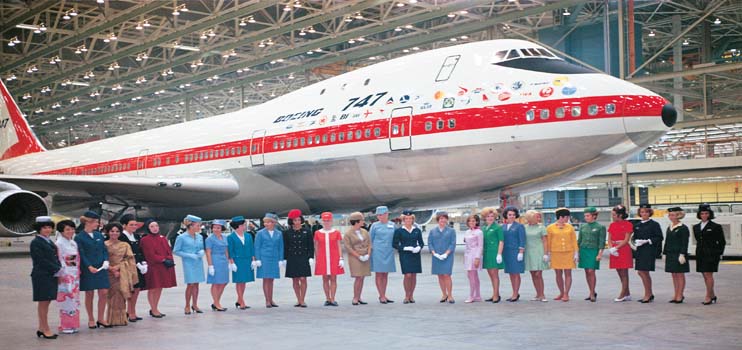Forty five years ago on February 9 the aircraft that made travel affordable for all took to the air but its birth almost bankrupted the three leaders in commercial aviation at the time.
Ironically, the 747 wasn’t supposed to carry passengers for very many years as the world looked to supersonic travel with the Boeing SST (see picture) and the Concorde.
Boeing has now sold 1,537 747s and it’s still in production with a new model wowing passengers.
But giving life to the aircraft that changed the world was a challenge that brought the world’s largest aerospace company, Boeing, the then biggest engine make Pratt and Whitney and the legendary Pan Am to their knees.
In the late 60s Boeing’s resources were stretched to the absolute limit as its engineers grappled with the complexities of its US government sponsored 2707 super sonic transport, which was eventually scrapped by Congress on May 20, 1971, despite commitments for 115 from 25 airlines.
At the time the 747 was considered only an interim solution before the world’s air routes were taken over by supersonics but fortunately Boeing had appointed Joe Sutter, a brilliant young designer, to the project and he was to father the classic of the jet age.
Mr Sutter, who still has an office at Boeing, is extremely modest on this role.
“I was the only qualified person available. All the smart guys, Maynard Pennell, Bill Cook, Bob Withington and many others were tied up on the SST, while Jack Steiner was heading the 737 program,” Mr Sutter said in a 2009 interview.
And the 747 was designed at the outset to be a freighter as everyone thought the 747 would be relegate to cargo routes.
“That’s what Boeing’s marketing people thought; they estimated we’d probably sell 50 or so 747s for passenger use.”
The 747 was a mass travel dream of Pan American World Airways founder Juan Trippe and Boeing chief Bill Allen.
Mr Trippe had started mass travel in 1948 when he introduced economy class onto 70 seat DC-4s.
But the 747 was far bigger. It would carry over 350 – almost double the 707 – and would slash fares.
It is impossible to find anyone who recalls if there was a definitive business plan for the 747. But traffic was booming for the airline industry which had enjoyed growth of 15 per cent a year through the early 1960s as passengers flocked to jet aircraft.
Mr Trippe was a man on a mission.
He wanted to make travel affordable for everyone and he believed that the 747 with the new high bypass turbofan engine could do just that.
Pan Am ordered 25 but most airlines were terrified of the jumbo’s size. Qantas ordered 4, British Airways 6, while many airlines just ordered 2 or 3 just to stay in the jumbo race.
However the trickle of orders wasn’t the major problem it was the 747’s weight.
Initially it was to weigh 250,000kg but this leapt to 322,000kgs by the time it flew because of design changes impacting range, altitude, speed and fuel burn. A solution, to run the engines at higher temperatures to give more thrust, was found and within six months of entering service the jumbo was performing at acceptable levels.
Despite the many problems encountered in its manufacture, the birth of the 747 was an amazing feat. Pan Am took delivery of its first aircraft just 3-and-a-half years after its order was placed and that included a 10-month flight-test program.
Because the 747 was so big airlines splashed out with lounges. There was the upper deck lounge (see picture) and many had lounges at the back of economy (see picture). However a Boeing proposal for a lower deck lounge – called the Tiger Lounge, because of the fabric design used in the mock-up never made it.
The spacious age however was short lived with airlines responding to a demand for cheaper and cheaper travel in the late 1970s by adding more seats.
Today the 747 is till the Queen of the Skies to many and for billions of passengers it is the plane that enabled them to see the world.
























